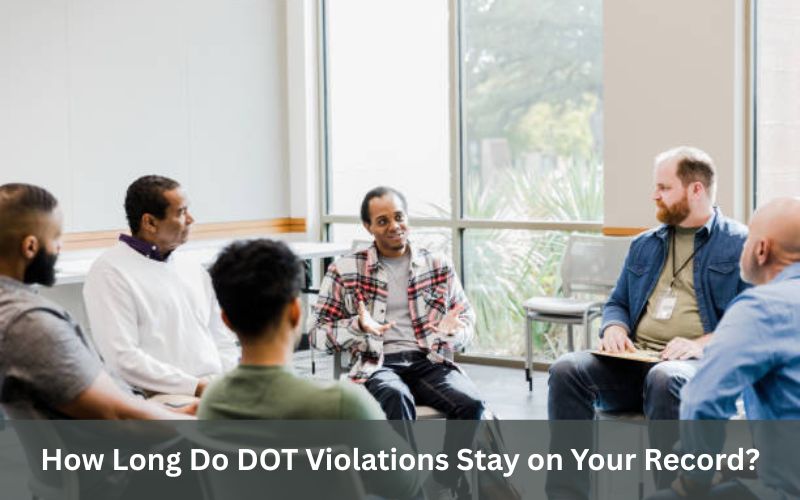Substance Abuse Professionals (SAPs) play a critical role in ensuring safety in the transportation industry. By offering evaluations and guidance to employees who violate Department of Transportation (DOT) drug and alcohol regulations, SAPs are instrumental in helping individuals return to sensitive job roles like driving commercial motor vehicles. However, a common question arises for both employees and employers navigating the process: Is SAP covered by insurance?
This blog post provides a detailed overview of SAP services, their role in the DOT drug and alcohol program, and the financial implications of SAP evaluations. By the end, you’ll have a clear understanding of SAP coverage under insurance and its impact on employees and employers.
What is a SAP and Their Role?
A Substance Abuse Professional (SAP) is a qualified individual tasked with evaluating employees who test positive for drug or alcohol use or refuse to comply with DOT testing protocols. SAPs make recommendations for education, treatment, follow-up tests, and aftercare, ensuring that employees fulfill the requirements for returning to safety-sensitive functions.
The DOT’s drug and alcohol testing requirements are governed by 49 CFR Part 40, which outlines the procedures for testing and compliance for safety-sensitive employees. SAPs are not advocates for the employer or the employee but focus on protecting public safety by overseeing compliance with these regulations. Once a violation occurs, employees must complete the SAP process before resuming any safety-sensitive duties. Learn more about SAPs here.
SAP Evaluation Timeline
The SAP process begins with an initial evaluation, where the SAP determines the extent of the employee’s substance use issue and recommends an appropriate treatment or education plan. Following compliance with the plan, the SAP conducts a follow-up evaluation to confirm readiness for return-to-duty testing. If cleared, the employee must then pass a DOT-mandated drug or alcohol test.
Why the SAP Process is Crucial
According to the FMCSA’s regulations, maintaining a drug- and alcohol-free transportation workforce is vital for the safety of passengers, pedestrians, and other road users. Substance use violations compromise public safety, so the SAP process ensures that employees are medically and psychologically fit to resume their roles. For a full overview of drug and alcohol guidelines, view the FMCSA drug and alcohol rules.
Are SAP Services Covered by Insurance?
When it comes to payment, SAP services often fall into a gray area. While some aspects of the evaluation and treatment process may be partially covered by insurance, the extent of coverage depends on several factors:
1. Employer or Insurance Plan Policy
Insurance coverage for SAP services varies widely and is not legally mandated under DOT regulations. Many employer-sponsored insurance plans categorize SAP services as mental health support or addiction treatment services. However, these policies may impose limitations such as deductibles, co-pays, or caps on the number of covered sessions.
It’s essential for employees to verify their plan’s terms to determine whether SAP evaluations are specifically included. If not covered, the employee must bear the full cost of the process.
2. Employee Financial Responsibility
If an insurance plan does not cover SAP services, employees are required to pay out of pocket for all associated costs. This includes the SAP’s evaluation fees, recommended treatment programs, and follow-up testing. According to DOT regulations, employers are prohibited from covering these expenses directly for employees required to undergo SAP evaluations.
3. Treatment Costs vs. SAP Evaluations
Another nuance involves SAP-recommended treatment programs. While insurance may not cover SAP evaluations, some health insurance policies do cover the cost of specific treatments, such as counseling, rehabilitation, or education sessions, if they fall under mental health or substance abuse benefits.
4. Small Employer Plans vs. Large Corporations
Large employers in industries like trucking or aviation may offer robust health plans that incorporate addiction support. However, small businesses that rely on cost-effective or minimal coverage plans often fail to include SAP-related expenses. Employees should work closely with their HR departments and insurance providers to clarify the specifics.
The Financial Implications of SAP Evaluations
The financial burden of SAP evaluations and subsequent treatment often varies based on the complexity of the employee’s situation. Below, we review key cost considerations for both employees and employers:
For Employees Evaluation Fees
Most SAP evaluations range between $300 and $600, depending on the SAP’s location, credentials, and the thoroughness of the evaluation. Employers cannot reimburse employees for these costs, as per DOT’s regulation under 49 CFR Part 40.
Treatment Recommendations
SAP treatment plans may involve additional fees if an employee is assigned therapy sessions, substance abuse counseling, or rehabilitation programs. These programs can cost anywhere from $100 to $1,000+, depending on their duration and intensity.

Follow-Up Testing
After the treatment plan, employees are required to complete a return-to-duty drug or alcohol test, which can exceed $50 per test. Failure to pass this test will restart the employee’s SAP process.
For Employers Administrative Oversight
Employers ensure employees comply with DOT standards by maintaining testing records, overseeing return-to-duty procedures, and querying the FMCSA Clearinghouse. These record-keeping responsibilities are time-intensive and cost employers indirectly through administrative resources.
Get insights on Clearinghouse requirements here.
Operational Costs
When employees cannot participate in safety-sensitive operations due to SAP requirements, employers must allocate resources to temporary replacements or reduced productivity, leading to a financial strain.
Supervisor Training
Per DOT rules, supervisors must receive specific training on detecting substance use and managing incidents of noncompliance. This training incurs additional costs for businesses.
Navigating the Lack of Standardized Insurance Coverage
The ambiguous nature of SAP insurance coverage prompts both employees and employers to proactively plan for unforeseen costs. Here are some actionable steps to help manage the financial challenges:
- Check Employer-Sponsored Insurance Plans: Employees should consult their HR representatives to determine which aspects of the SAP process might be included in the company’s plan.
- Verify Out-of-Network Benefits: If your SAP is not covered by your network, explore whether your plan offers partial reimbursement for out-of-network providers.
Explore Employee Assistance Programs (EAPs)
Some companies offer employee assistance programs (EAPs) that include substance abuse support. While SAP evaluations might not be directly included, the program may provide alternative solutions for other treatment costs.
- Request Payment Plans: Employees with high out-of-pocket costs can appeal to SAP offices or programs for flexible payment plans.
- Understand Your Rights: The FMCSA and DOT prioritize confidentiality for employees participating in SAP and return-to-duty programs. Ensure you are aware of your privacy rights when accessing resources through employers.
Final Thoughts
SAP services are vital in protecting public safety and ensuring employees in safety-sensitive roles undergo proper rehabilitation after substance use incidents. However, SAP evaluations, treatment plans, and related follow-ups often result in financial challenges for employees and indirect costs for employers.
Whether SAP services are covered by insurance depends largely on individual circumstances, employer policies, and the specifics of a health insurance plan. Employees are encouraged to thoroughly review their coverage and take advantage of resources like Employee Assistance Programs (EAPs) when available. By understanding the process and planning accordingly, both employees and employers can ensure compliance with DOT standards while managing financial implications.
For a detailed explanation of SAP guidelines, visit the FMCSA’s website or the DOT Substance Abuse Professional resources. To review regulations in full, see 49 CFR Part 382.
Other Related Article:
How much does a DOT SAP evaluation cost?

















